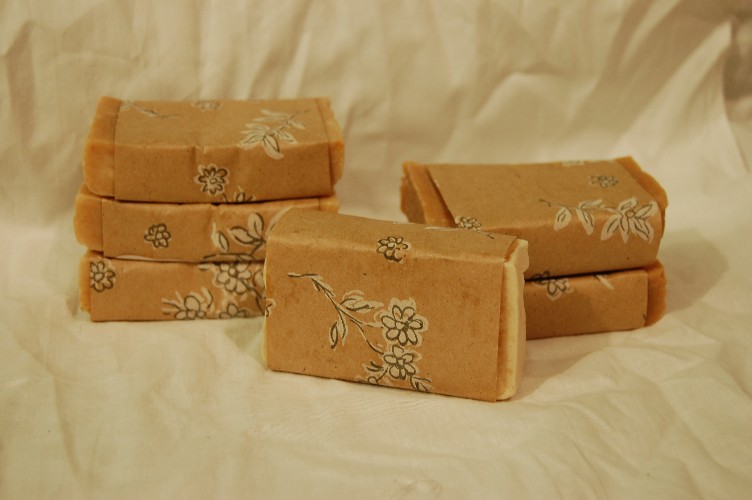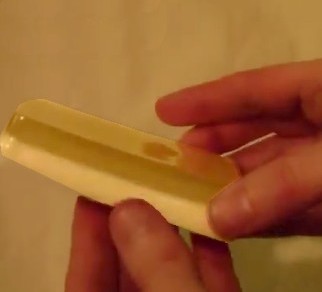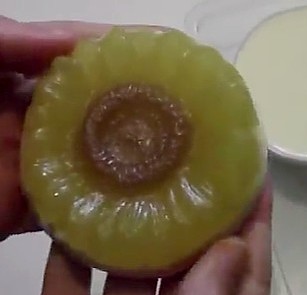What Type of Soap Should You Make?

Washing with a bar of handmade soap is truly an experience. While mass-produced, store bought soaps often dry the skin, handmade soaps moisturize it. Pleasant scents and colors, often with bits of plant matter dabbled in, are formed into eye-catching designs. Homemade vegetable dyes and essential scented oils complete the experience making for a natural, refreshing experience.
When you’re first starting out with soap making, the huge amount of information can be a bit overwhelming. Should you liquid soap or bar soap? Hot process or cold process? Lye or glycerin? There are a lot of options faced by the first-time soapmaker, so let’s break it down. The two most common types of homemade soap are melt-and-pour and lye.
Melt-and-Pour Soap Is Easy
Melt-and-pour soap is pretty much exactly what it sounds like. It comes as a big block of pre-made vegetable glycerin soap. You simply heat up on your stove top (or some versions even work in the microwave), stir in your chosen color and scent, add a few lavender blossoms or something similar, and then pour it into your mold.
Melt-and-pour soap cools in about an hour, and that’s it. The soap is done and ready to use; no curing necessary. It’s certainly the safest way to make soap since you don’t have to worry about using lye. You also don’t have to worry about having to throw out a batch of soap, because all the ingredients are already properly mixed. All you add is scent and color, (which is almost impossible to mess up 😉 ).
Melt-and-pour soap comes in opaque and transparent blocks. This makes it especially easy to get creative with. You can produce some very unique soap bars by combining the two types of soaps in multiple molds.
Lye Soap Is Truly Homemade
While melt-and-pour soap is sometimes referred to as “cheater” soapmaking, lye soapmaking is the epitome of homemade. Lye soap is often referred to as old-fashioned soap because the method is hundreds of years old. (When you think lye soap, think Laura Ingalls).
Technically I suppose you could say it’s even older than that. Thousands of years ago people were mixing animal fat and wood ashes together to make “soap.” But the more commonly known form of lye soap, the kind we still make today, is only a few hundred years old.
In its most basic form, this soap is made with just three ingredients: Lard or tallow (animal fat), water, and lye. However, soapmakers have always been creative with this basic recipe often replacing the animals fats with olive oil or coconut butter to make it animal-friendly. Or trading up the water for raw milk, which creates a rich, moisturizing soap.
Lye soap can be dangerous because lye is very caustic. (And yes, homemade lye is just as dangerous as store-bought lye). It’s also more difficult to make. It involves several hours of standing at a stove, adding ingredients at just the right time. And sometimes the batch still doesn’t turn out quite right and has to be abandoned.
Long Shelf Life
However, if you succeed in making lye soap, you might never want to use any other kind. One reason being that lye soap lasts “forever.” Ok, not exactly forever. Lye soap does last a very long time though, due to its hardness, making it very useful to keep on hand.
Some people worry about using lye soap, but there’s really nothing to worry about. The dangers of the lye come during the actual soapmaking process when you’re adding the live lye to the soap mixture. Once a batch of lye soap has been made, you leave it to set and “cure” for several weeks. There is no lye left in the finished soap.
So to recap, if you just want something easy and pretty, melt-and-pour soapmaking is probably for you. If you want to get a little more “pioneer style,” try lye soap. It’s a truly homemade product.
Written by Amber Reifsteck, The Woodland Elf
The information provided on this website is for general information purposes only. If you choose to rely on the information on this website, you do so at your own risk and you assume responsibility for the results. (Full disclaimer here)
Enjoy this post? Click here to subscribe by email and get new posts delivered to your inbox.Ads by Google







